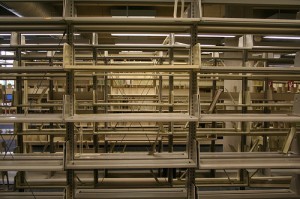 What happens to Lean strategy in the event of an inventory shortage?
What happens to Lean strategy in the event of an inventory shortage?
Companies that have too little product on hand also experience waste.
Specialist retailer Lululemon shaved inventory margins too close. As a result, customers and investors are disappointed and the company has been forced to waste money on shipping products by air rather than by sea.
A strategy of lean inventories in stores became problematic when supplier issues and a website migration caused widespread dissatisfaction with a lack of inventory both in stores and online.
Understocking: When Minimal Inventory Creates Waste
As the Lululemon case demonstrates, perhaps the greatest peril of understocking lies in the unsustainable additional costs imposed when a company must scramble to restock empty shelves.
Whether it's shipping expedition or overtime payments to workers, any disruption in your supply chain that creates a "rush job" will cost you. This waste is avoidable through proper planning and product flow.
Another risk, more subtle but equally perilous, is that of overwork. Lean management identifies overwork as wasteful for good reason. It contributes to high turnover (possibly the most wasteful of all personnel programs) and leads to accidents if tired workers make mistakes. If a company runs low on inventory and must increase production to fix the oversight, laborers will be overworked.
Lastly, understocking creates waste in that it needlessly damages customer perceptions, forcing additional work and additional costs just to regain your previous perception.
How would you feel about a company whose products were unavailable when your car was broken down? If the part you need is nowhere to be found from your preferred manufacturer, brand loyalty is likely to fall by the wayside as you scramble to repair your vehicle.
Lean management is about customer defined value, and a basic component of value is availability.
Walking the Fine Line
So, what is a Lean manager to do? How can one stock just enough products without leaving shelves bare or products gathering dust?
There is no single perfect solution, but the following best practices will help:
- Make interdepartmental communication a priority. Do not allow your supply chain to be blindsided by a website change, or your retail stores to be surprised if you are shifting manufacturing plants. Talk early and often about changes and ask for estimated inventory needs from every manager affected.
- Adjust predictions continually. Your sales predictions may become outdated faster than you think. Reconsider forecasts in light of any major change, whether it is a global economic shift or a front page story about your company in popular newspaper.
- Handle planned scarcity with extreme caution. Lululemon encountered trouble in part because its strategy included artificially enforced product scarcity, in order to excite customers and increase demand. If you plan to tweak supply and demand principles similarly, manage those inventory decisions even more closely than you do your supply chain at large. Be prepared to make adjustments as often as daily, based on customer satisfaction.
